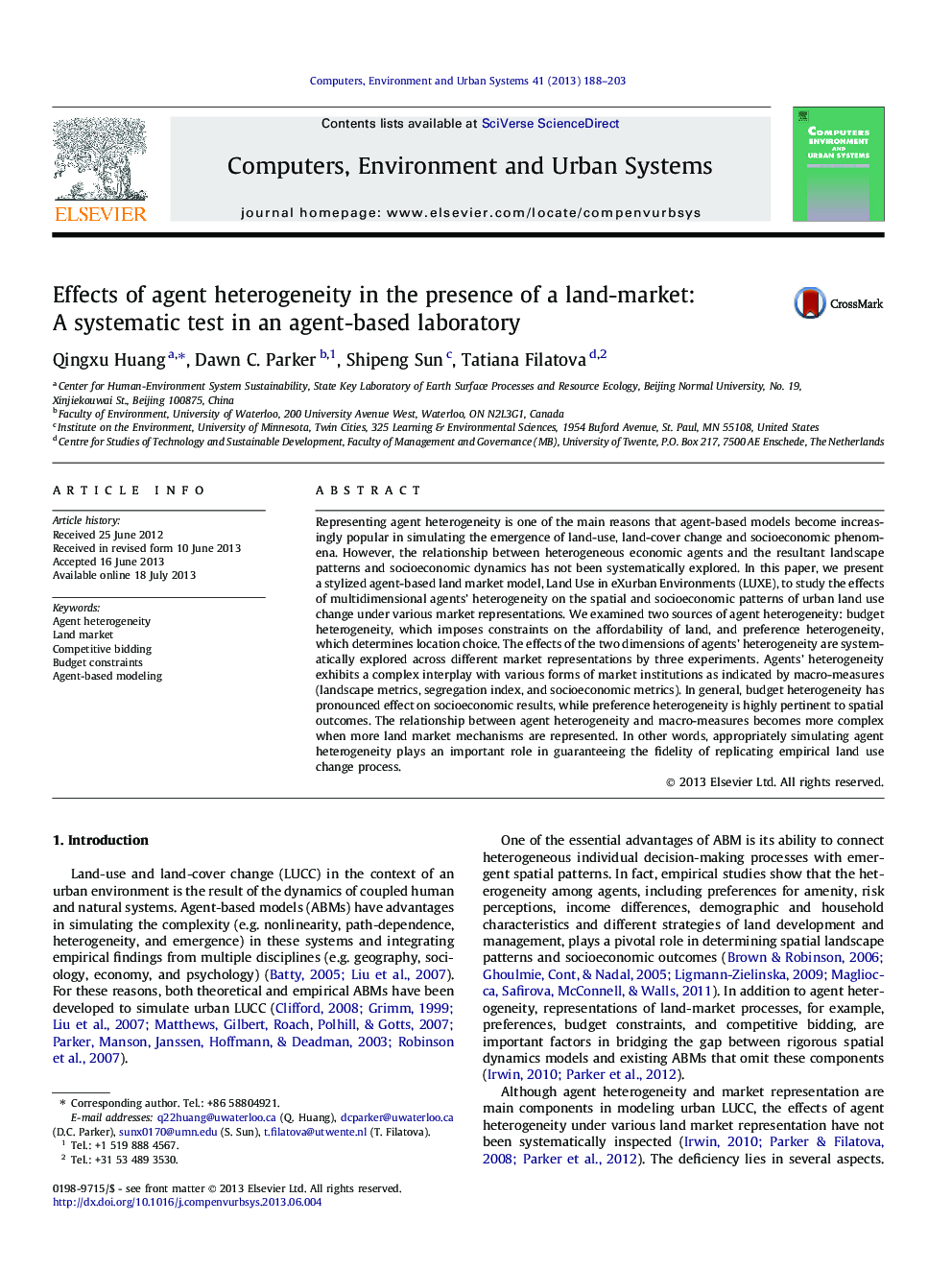| Article ID | Journal | Published Year | Pages | File Type |
|---|---|---|---|---|
| 6922009 | Computers, Environment and Urban Systems | 2013 | 16 Pages |
Abstract
Representing agent heterogeneity is one of the main reasons that agent-based models become increasingly popular in simulating the emergence of land-use, land-cover change and socioeconomic phenomena. However, the relationship between heterogeneous economic agents and the resultant landscape patterns and socioeconomic dynamics has not been systematically explored. In this paper, we present a stylized agent-based land market model, Land Use in eXurban Environments (LUXE), to study the effects of multidimensional agents' heterogeneity on the spatial and socioeconomic patterns of urban land use change under various market representations. We examined two sources of agent heterogeneity: budget heterogeneity, which imposes constraints on the affordability of land, and preference heterogeneity, which determines location choice. The effects of the two dimensions of agents' heterogeneity are systematically explored across different market representations by three experiments. Agents' heterogeneity exhibits a complex interplay with various forms of market institutions as indicated by macro-measures (landscape metrics, segregation index, and socioeconomic metrics). In general, budget heterogeneity has pronounced effect on socioeconomic results, while preference heterogeneity is highly pertinent to spatial outcomes. The relationship between agent heterogeneity and macro-measures becomes more complex when more land market mechanisms are represented. In other words, appropriately simulating agent heterogeneity plays an important role in guaranteeing the fidelity of replicating empirical land use change process.
Related Topics
Physical Sciences and Engineering
Computer Science
Computer Science Applications
Authors
Qingxu Huang, Dawn C. Parker, Shipeng Sun, Tatiana Filatova,
